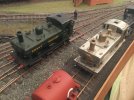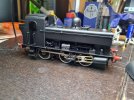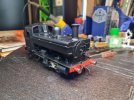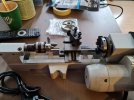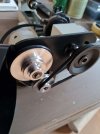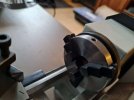You are using an out of date browser. It may not display this or other websites correctly.
You should upgrade or use an alternative browser.
You should upgrade or use an alternative browser.
Amanda's Workshop: Scratchbuilding Toward A Layout
- Thread starter WM183
- Start date
WM183
Western Thunderer
And the build is done! Now I just need to grab crew and some crewbits from Modelu and coal up the bunker, and perhaps weather it down some. I will use Dinghams on my new layout - I'm not steady-handed nor sharp-eyed enough for chain couplings - and will add a decoder sometime, but for now, this one's in the books! I never, ever want to build a kit like this again - but I'm very glad i did this one!
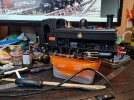
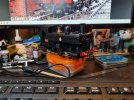


Pencarrow
Western Thunderer
View attachment 200470
two of the beasts at Porth Dinllaen. Seem to be a wee bit lacking in the whistle department…
I've got them for the RHS beastie... Somewhere....
Pencarrow
Western Thunderer
View attachment 200470
two of the beasts at Porth Dinllaen. Seem to be a wee bit lacking in the whistle department…
Interesting that the cab roof shutters open different directions!
WM183
Western Thunderer
So!
My PRR project has been stalled by the lack of a mill worth the name. I need to make an assembly fixture to make wheels. My little Unimat just isn't up to it. I am trying to sell it, as well as a couple panniers, to get a better lathe (A Compact 5 is likely my next lathe, they're common here) but I will not yet have a dedicated mill. Is it possible to mill slots across a piece of stock with a lathe? It is aluminum, FWIW.
Amanda
My PRR project has been stalled by the lack of a mill worth the name. I need to make an assembly fixture to make wheels. My little Unimat just isn't up to it. I am trying to sell it, as well as a couple panniers, to get a better lathe (A Compact 5 is likely my next lathe, they're common here) but I will not yet have a dedicated mill. Is it possible to mill slots across a piece of stock with a lathe? It is aluminum, FWIW.
Amanda
JimG
Western Thunderer
Is it possible to mill slots across a piece of stock with a lathe? It is aluminum, FWIW.
That's the way a lot of us had to do milling in years gone past when the cost of a milling machine was a bit too high for an amateur's pocket. If the lathe you acquire can take a vertical slide on the cross-slide, then you can do milling. You have to go a bit gently since the lathe with a vertical slide is not as rigid as a milling machine. The milling cutters are held in the chuck - either a three-jaw or a collet chuck.
Here's a pic of a relatively modern lathe setup with a vertical slide in place :-
A simpler way to mill in the lathe is to clamp the workpiece in the tool-holder, or clamp it to a piece of angle iron bolted to the cross-slide, but you then lose the ability to have easy vertical adjustment.
The other limitation when using the lathe for milling is a that your range of movements is limited to the cross-slide and vertical slide movements which are usually a lot less than you would have on a milling machine.
Jim.
Last edited:
WM183
Western Thunderer
Hi Jim,
That looks workable. I only need to mill in straight lines across a fixture for holding wheel hub, rims, and spokes while I solder them; the process and jig I need to make are shown in this blog entry:

 proto48.org
proto48.org
That looks workable. I only need to mill in straight lines across a fixture for holding wheel hub, rims, and spokes while I solder them; the process and jig I need to make are shown in this blog entry:

Scratch Building Some Drivers
Drivers in “O” scale are almost impossible to find. And when a set is found it must be machined to Proto 48 standards. This means new tires and the wheel casting must be thinned to be m…
 proto48.org
proto48.org
WM183
Western Thunderer
We've been focused on British engines for a bit, let's look back across the pond to Pennsylvania, specifically the Wilkes-Barre Division of the mighty PRR. In most places, the Pennsy was all about 4 track mainlines running through the industrial heartland of America with massive engines moving massive loads and hotshot expresses streaking through the night.
But not for us.
The Wilkes-Barre division of the PRR, in central Pennsylvania, was PRR's connection to the rich anthracite fields of this region of Pennsylvania, and was much less imposing. Single track windy branchlines reaching deep into coal country, this division was run almost exclusively with H9s 2-8-0s and L1s 2-8-2s, with only a small handful of B6 type switchers and I1s 2-10-0s, neither of which operated much off the "beaten track". Passenger service on many of the branchlines here was provided by Doodlebugs!
This roster was found on the Lancaster & Atlantic's Call Board website, and all credit goes to them for providing this to us! While this roster is from 1944, we can expect the roster earlier to be similar, likely with H6s consolidations being slowly replaced by H9s. The L1s would have been in the same position however, being quickly relegated to secondary lines when the M1 and I1 arrived.
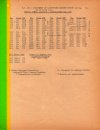
We like branchlines. We like the Pennsy. We're building a PRR 2-8-0 as it is. In addition, the H9s class and the L1s class used the same driving wheels - PRR loved their standardization - so we can build one wheel jig! They use the same tender and pilot truck. Many other bits are the same. This also gets us a good way towards building K4s Pacifics and E6s Atlantics - The K4/L1 shared boiler, cab, etc., as did the H9/E6, so should we decide to build one of these others... we're halfway there.
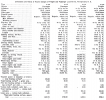
I have always loved these engines, despite the lack of attention they tend to get from the model making industry and the model RR press. In addition, I have some very good resources (GA drawings, frame arrangements, boiler arrangements, tender arrangements...) for these types.
When my new lathe arrives, let's have a go at making some of these 62 inch, 14 spoke drivers up. In the meantime, I am going to start the sides of a batch (5 or 6 perhaps?) of PRR hopper cars, the H21a type being so iconic of the road.
But not for us.
The Wilkes-Barre division of the PRR, in central Pennsylvania, was PRR's connection to the rich anthracite fields of this region of Pennsylvania, and was much less imposing. Single track windy branchlines reaching deep into coal country, this division was run almost exclusively with H9s 2-8-0s and L1s 2-8-2s, with only a small handful of B6 type switchers and I1s 2-10-0s, neither of which operated much off the "beaten track". Passenger service on many of the branchlines here was provided by Doodlebugs!
This roster was found on the Lancaster & Atlantic's Call Board website, and all credit goes to them for providing this to us! While this roster is from 1944, we can expect the roster earlier to be similar, likely with H6s consolidations being slowly replaced by H9s. The L1s would have been in the same position however, being quickly relegated to secondary lines when the M1 and I1 arrived.

We like branchlines. We like the Pennsy. We're building a PRR 2-8-0 as it is. In addition, the H9s class and the L1s class used the same driving wheels - PRR loved their standardization - so we can build one wheel jig! They use the same tender and pilot truck. Many other bits are the same. This also gets us a good way towards building K4s Pacifics and E6s Atlantics - The K4/L1 shared boiler, cab, etc., as did the H9/E6, so should we decide to build one of these others... we're halfway there.

I have always loved these engines, despite the lack of attention they tend to get from the model making industry and the model RR press. In addition, I have some very good resources (GA drawings, frame arrangements, boiler arrangements, tender arrangements...) for these types.
When my new lathe arrives, let's have a go at making some of these 62 inch, 14 spoke drivers up. In the meantime, I am going to start the sides of a batch (5 or 6 perhaps?) of PRR hopper cars, the H21a type being so iconic of the road.
Last edited:
WM183
Western Thunderer
I am back to P48 for a bit!
The New York Central truss rod boxcar has overcome a hurdle. I have bodged up queen posts from some styrene shapes, and have decided how to attach the truss rods. As durability (this will be for a convention layout) is important, I have elected to make the truss rods from .8mm brass wire. By some clever drilling and bending, the wire holds itself in place firmly, yet allows for slight expansion or flexing. This is a desirable quality! It holds itself in place like this firmly. I need to get a larger size tube to make turnbuckles, but the underframe of this car is nearly complete. Now to build the rest of the roof and body details - and find a set of archbar trucks.
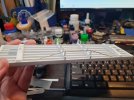
Scratchbuilding freight cars is WAY more fun than it has any right to be.
The New York Central truss rod boxcar has overcome a hurdle. I have bodged up queen posts from some styrene shapes, and have decided how to attach the truss rods. As durability (this will be for a convention layout) is important, I have elected to make the truss rods from .8mm brass wire. By some clever drilling and bending, the wire holds itself in place firmly, yet allows for slight expansion or flexing. This is a desirable quality! It holds itself in place like this firmly. I need to get a larger size tube to make turnbuckles, but the underframe of this car is nearly complete. Now to build the rest of the roof and body details - and find a set of archbar trucks.

Scratchbuilding freight cars is WAY more fun than it has any right to be.
WM183
Western Thunderer
It came with a couple spares, and I will order some more. Spares are good!Get some drive belts in your spares box.
They will break at the most inconvenient time.....
In other news, it seems Protocraft (the biggest supplier of P48 parts I have seen) is not going to be importing any more brass parts from Korea, citing rapidly rising costs. They have also handed all parts sales besides trucks and couplers (what they do have in stock) and decals to a different business. This leaves Kadee as the only real supplier of O scale trucks that I can easily order from, it seems. They make generic Bettendorf and Archbar trucks that fit my era of 1920-1928 or so. I'll be turning my own wheels down to P48 standards, I guess. Good thing I seem to have a new lathe.
3d printing in brass cannot arrive quickly enough. The ability to print truck sideframes at home will be a godsend for those of us in odd scales or periods.
John57sharp
Western Thunderer
There Is an inverse to this, or some such relationship. When I bought my Taig/Peatol over a decade ago, I was advised to always have a spare belt to hand, so I bought one. I still have it, unused. Now I’ve done it! To be fair, the lathe is not overused, but it’s doing well!Get some drive belts in your spares box.
They will break at the most inconvenient time.....
John
ps expect a “two belts snapped post any day now”
simond
Western Thunderer
I'm going to take that advice...Get some drive belts in your spares box.
They will break at the most inconvenient time.....
I do have some drive belt material - possibly polyurethane - which can be cut with a scalpel and joined with a hot knife (using three hands). Never needed it, I think I am still using the belt that came with my lathe, which I bought maybe in 1999 or 2000...
Amanda,
get yourself a decent chunk of chipboard or blockboard or something, maybe an offcut of kitchen worktop, to attach your lathe to. Mine came with a base, with a vac-formed plastic drawer in, which is fine - It has emery cloth pads on the feet to stop it slipping. I keep thinking that I will make some upstands to lift the lathe up by ~ 40mm or so to make it easier to clean out underneath.
In any case, the lathe definitely wants to be bolted down.
enjoy the new toy!
Simon

